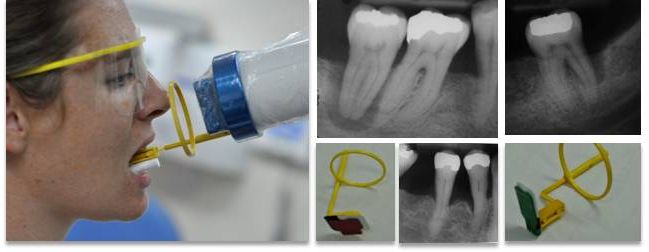Periodontology: Radiographic Assessment

Radiographic assessment is an essential component of periodontal diagnosis and treatment planning. It provides critical insights into bone levels, defects, and disease progression, aiding in the effective management of periodontal conditions.
This course focuses on the role of radiographs in periodontology, including their use in identifying bone loss patterns, evaluating defects, and understanding limitations of conventional imaging.
Key areas covered in this module include:
- Types of radiographs used in periodontology, including periapical, bitewing, and CBCT.
- Interpreting radiographic findings such as bone loss patterns and periodontal defects.
- Understanding the limitations of 2D imaging and when to consider advanced techniques like CBCT.
- Best practices for ensuring high-quality, diagnostically acceptable radiographs.
By completing this course, dental professionals will gain a deeper understanding of radiographic techniques and their application in periodontal assessment and management.
Course Review: Periodontology: Radiographic Assessment
Participant Feedback Overview
Participants provided highly positive feedback on Dentaljuce's online CPD course, "Periodontology: Radiographic Assessment," highlighting the module’s practical value, clarity, and effectiveness in enhancing their professional skills and diagnostic competencies.
Key Strengths
Participants particularly valued the course for:
- Clear and Concise Information: The module was consistently praised for delivering detailed yet easy-to-comprehend information, helping practitioners grasp complex concepts related to periodontal radiographic assessment.
- Up-to-Date Content: Participants appreciated that the course provided current best practices, ensuring practitioners could apply the latest radiographic techniques effectively in clinical scenarios.
- Practical Relevance: The course's focus on real-world application significantly enhanced participants’ understanding of radiographic findings, aiding them in refining their diagnostic skills and improving patient care outcomes.
Specific Positive Comments from Participants
- "Concise and detailed information on radiographs in periodontal treatment. Thank you."
- "Excellent update on periodontal disease radiography."
- "Clear explanations and great examples for interpreting radiographs."
- "Very helpful in refining diagnostic skills for periodontal care."
- "An excellent module for both learning and applying radiographic assessment techniques."
Participants noted the module’s relevance, particularly given the increasing retention of teeth among patients, emphasising its contemporary significance.
Closed-Question Feedback Summary
- Met learning objectives: 91.2% strongly agree/agree
- Good quality: 93.9% strongly agree/agree
- Useful & relevant: 90.9% strongly agree/agree
- Engaging: 91.0% strongly agree/agree
- Pitched at right level: 90.4% strongly agree/agree
These results underscore strong participant satisfaction regarding the course’s quality, engagement, relevance, and overall value.
Suggestions for Improvement
While feedback was predominantly positive, a small number of participants suggested minor enhancements, primarily around the inclusion of more interactive or clinical scenario-based questions, to further test and consolidate learning through practical application.
Overall Impression
Participants regarded the "Periodontology: Radiographic Assessment" module as an excellent educational resource, effectively meeting their professional learning needs and significantly contributing to improved periodontal care.
Aim
The aim of the learning and teaching materials in this Dentaljuce module is to allow learners to develop their professional knowledge, understanding, and competence in using radiographic techniques for periodontal assessment and management, in line with their identified personal learning requirements.
Course objective
- to update members of the dental team with current best practice in periodontal radiographic assessment.
Anticipated learning outcomes:
- Understand the importance of radiographic assessment in periodontology.
- Recognise the indications and limitations of different radiographic techniques.
- Interpret common radiographic findings in periodontal diseases.
- Know when to consider advanced imaging techniques, such as CBCT, for complex cases.
- Provide improved diagnostic and treatment outcomes for patients with periodontal disease.
GDC Development Outcomes
This CPD will support the learner in meeting the following GDC Development Outcome(s): C.

